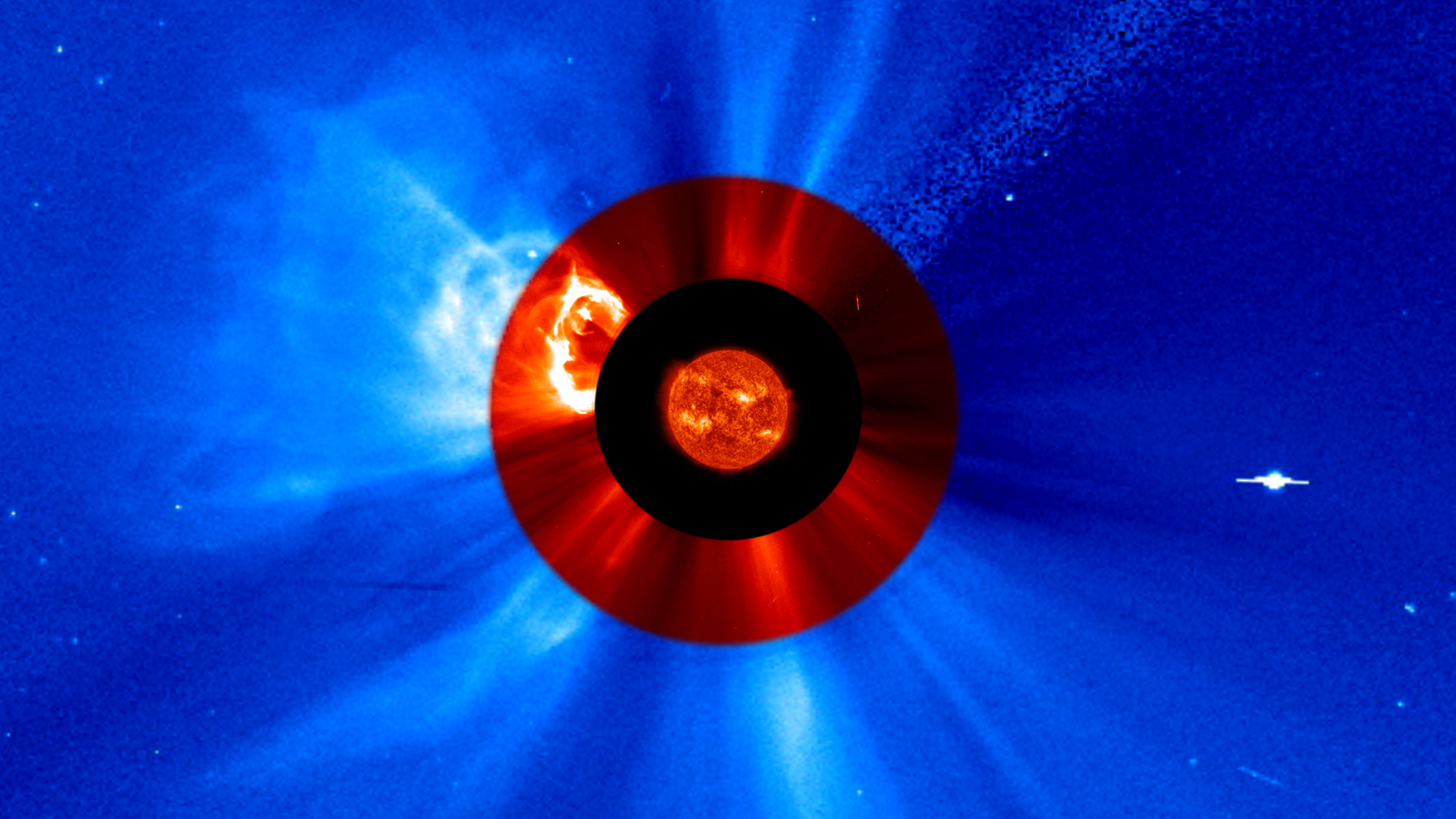From The National Aeronautics and Space Administration
And
The NASA Goddard Space Flight Center
5.21.24
Karen Fox
Headquarters, Washington
202-358-1600
karen.fox@nasa.gov
Sarah Frazier
NASA’s Goddard Space Flight Center
202-853-7191
sarah.frazier@nasa.gov

The Joint EUV coronal Diagnostic Investigation (JEDI) will fly aboard the European Space Agency’s Vigil space weather mission and capture new views that will help researchers connect features on the Sun’s surface to those in the Sun’s outer atmosphere, the corona. Credit: NASA
NASA announced Tuesday it selected a new instrument to study the Sun and how it creates massive solar eruptions. The agency’s Joint EUV coronal Diagnostic Investigation, or JEDI, will capture images of the Sun in extreme ultraviolet light, a type of light invisible to our eyes but reveals many of the underlying mechanisms of the Sun’s activity.
Once integrated aboard the ESA’s (European Space Agency’s) Vigil space weather mission, JEDI’s two telescopes will focus on the middle layer of the solar corona, a region of the Sun’s atmosphere that plays a key role in creating the solar wind and the solar eruptions that cause space weather.
The Vigil space mission, planned to launch in 2031, is expected to provide around-the-clock space weather data from a unique position at Sun-Earth Lagrange point 5 – a gravitationally stable point about 60 degrees behind Earth in its orbit.

This vantage point will give space weather researchers and forecasters a new angle to study the Sun and its eruptions. NASA’s JEDI will be the first instrument to provide a constant view of the Sun from this perspective in extreme ultraviolet light – giving scientists a trove of new data for research, while simultaneously supporting Vigil’s ability to monitor space weather.
“JEDI’s observations will help us link the features we see on the Sun’s surface with what we measure in the solar atmosphere, the corona,” said Nicola Fox, associate administrator, Science Mission Directorate at NASA Headquarters in Washington. “Combined with Vigil’s first-of-its-kind, eagle eye view of the Sun, this will change the way we understand the Sun’s drivers of space weather – which in turn can lead to improved warnings to mitigate space weather effects on satellites and humans in space as well as on Earth.”
The project is led by Don Hassler at the Southwest Research Institute in Boulder, Colorado. The instrument is funded by the NASA Heliophysics Space Weather Program with a total cost not to exceed $45 million. Management oversight will be provided by the Living With a Star Program of the Explorers & Heliophysics Projects Division at NASA’s Goddard Space Flight Center in Greenbelt, Maryland.
For more information on NASA heliophysics missions, visit:
https://science.nasa.gov/heliophysics
See the full article here .
Comments are invited and will be appreciated, especially if the reader finds any errors which I can correct.
five-ways-keep-your-child-safe-school-shootings
Please help promote STEM in your local schools.
The NASA Goddard Space Flight Center, Greenbelt, MD is home to the nation’s largest organization of combined scientists, engineers and technologists that build spacecraft, instruments and new technology to study the Earth, the sun, our solar system, and the universe.
Named for American rocketry pioneer Dr. Robert H. Goddard, the center was established in 1959 as NASA’s first space flight complex. Goddard and its several facilities are critical in carrying out NASA’s missions of space exploration and scientific discovery.
GSFC also operates two spaceflight tracking and data acquisition networks (the NASA Deep Space Network and the Near Earth Network); develops and maintains advanced space and Earth science data information systems, and develops satellite systems for the National Oceanic and Atmospheric Administration.

The National Aeronautics and Space Administration is the agency of the United States government that is responsible for the nation’s civilian space program and for aeronautics and aerospace research.
President Dwight D. Eisenhower established the National Aeronautics and Space Administration (NASA) in 1958 with a distinctly civilian (rather than military) orientation encouraging peaceful applications in space science. The National Aeronautics and Space Act was passed on July 29, 1958, disestablishing NASA’s predecessor, the National Advisory Committee for Aeronautics (NACA). The new agency became operational on October 1, 1958.
Since that time, most U.S. space exploration efforts have been led by NASA, including the Apollo moon-landing missions, the Skylab space station, and later the Space Shuttle. Currently, NASA is supporting the International Space Station and is overseeing the development of the Orion Multi-Purpose Crew Vehicle and Commercial Crew vehicles. The agency is also responsible for the Launch Services Program (LSP) which provides oversight of launch operations and countdown management for unmanned NASA launches. Most recently, NASA announced a new Space Launch System that it said would take the agency’s astronauts farther into space than ever before and lay the cornerstone for future human space exploration efforts by the U.S.
NASA science is focused on better understanding Earth through the Earth Observing System, advancing heliophysics through the efforts of the Science Mission Directorate’s Heliophysics Research Program, exploring bodies throughout the Solar System with advanced robotic missions such as New Horizons, and researching astrophysics topics, such as the Big Bang, through the Great Observatories [Hubble, Chandra,
Spitzer and associated programs, and now the NASA/ESA/CSA James Webb Space Telescope.




And now NASA’s PACE spacecraft will help us better understand our ocean and atmosphere by measuring key variables associated with cloud formation, particles and pollutants in the air, and microscopic, floating marine life (phytoplankton). These observations will help us better monitor ocean health, air quality, and climate change.

NASA shares data with various national and international organizations such as The Japan Aerospace Exploration Agency [国立研究開発法人宇宙航空研究開発機構](JP) and The European Space Agency [La Agencia Espacial Europea] [Agence spatiale européenne] [Europäische Weltraumorganization](EU).



